Hello, Conservario here!
In this article, I will be introducing how to play the thumb stroke. I will explain it as clearly as possible with images and text. Beginners can use this article as a reference for practicing the basic thumb stroke, while intermediate and advanced players can use it as a review.
There are generally two types of ways to play the thumb stroke:
- All the fingers except the thumb are supporting the body.
- All the fingers are detached from the body.
By understanding these two forms, you can achieve a more accurate and stable stroke. I will explain each of these forms in detail, so you can decide which one works best for you.
1. Stroke with all the fingers except the thumb are supporting the body
Let's check the form.
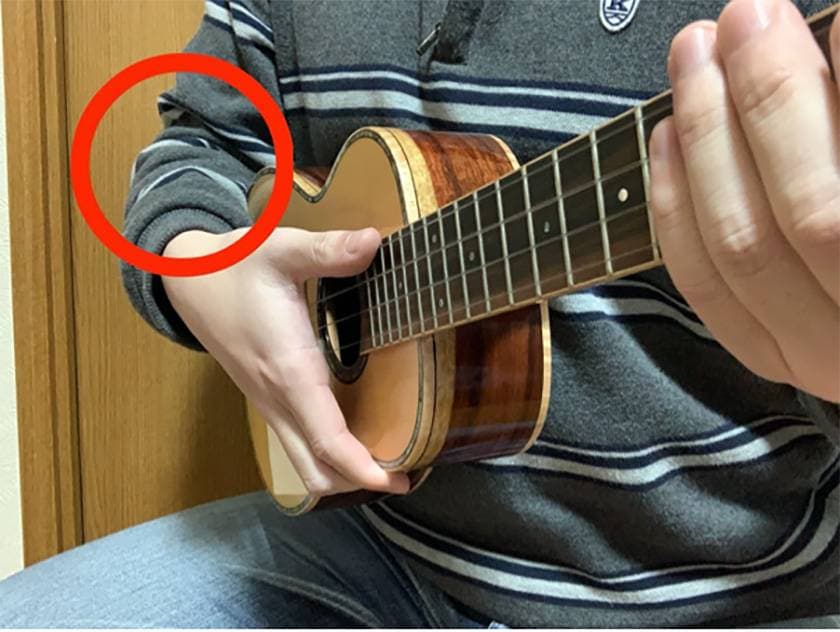
Place all your fingers except the thumb lightly on the bottom of the ukulele body to support it. Be careful not to let your fingers sink too deep into the body, as that will make it harder to play. Just lightly rest them on the body, and that's enough.
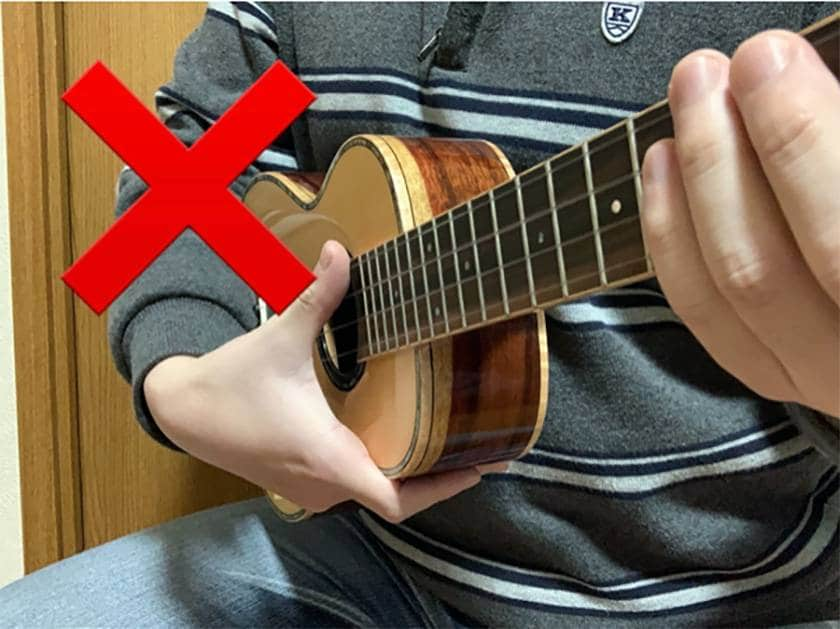
From this position, move your thumb downward.
Avoid pressing your thumb too hard, as it will make it harder to play. Instead, try to gently "sweep" the strings with your thumb.
It's fine if your left hand is holding down a familiar chord, but you don’t have to press anything with the left hand. Since this is a right-hand practice, it’s better not to focus on chord changes. Concentrate on the movement of your right hand and the sound it produces.
Even more important than the movement itself is the sound you’re creating. It’s difficult to express in words, but does it sound uniform or something similar?
If you're hearing too many separated notes, your speed is too slow. Play with more energy, as if you're sweeping all four strings at once!
To do this, it's important to use both your thumb and wrist effectively. Focus on moving the fleshy part at the base of your thumb.

Keep the first joint of your thumb straight without bending it as you strum.
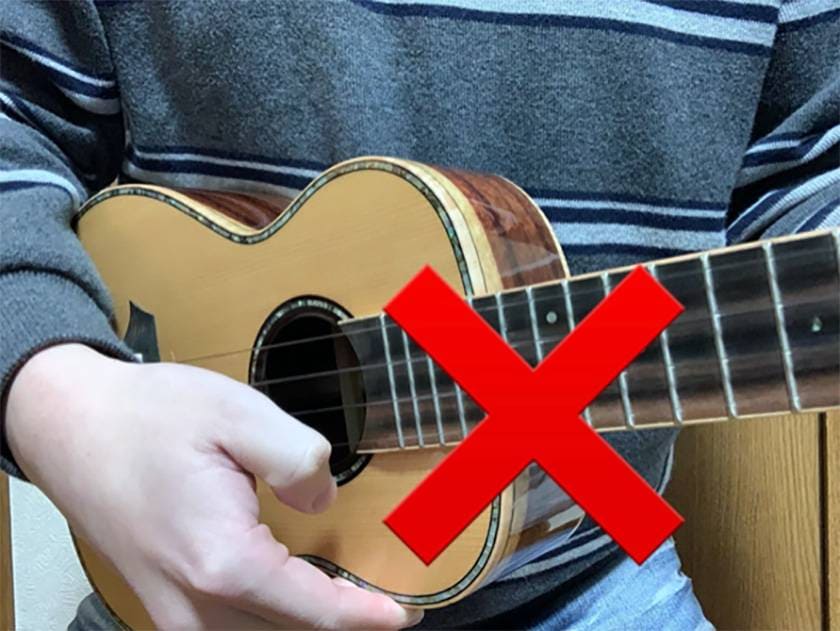
Also, rotate your wrist slightly, just a little. It doesn’t need to be a big movement. The wrist should move in sync with your thumb when you strum.
Did you manage that? Next, let’s practice the stroke where all the fingers are away from the body.
Fun Fact about the Thumb
When right-hand fingering is written in sheet music, the thumb is denoted as "P."
In Spanish, the thumb is called "Pulgar," which is where the "P" comes from.
While beginner sheet music may indicate "P" for the thumb and "I" for the index, "M" for the middle, "A" for the ring, and "C" for the pinky. Many pieces of music won’t have these written out. So, when you see a "P," remember that it refers to the thumb!
2. All fingers are away from the body
Let’s check the form of the stoke.

In this form, unlike the previous one, you don't support the body with your fingers.
Instead, the right elbow supports the body, and the left hand supports the neck.
The height and angle can vary depending on the person, but I recommend positioning the elbow and the head in a straight line for the most comfortable and effective angle and height.
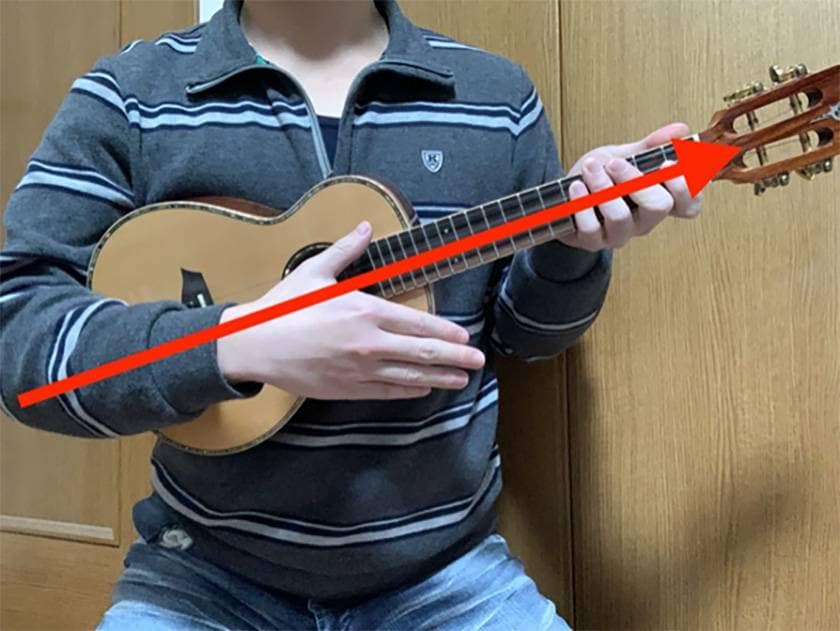
Keep your shoulders relaxed.
Once you've confirmed the right placing, let's try playing. Since you're not supporting the ukulele with your fingers, your wrist should feel more flexible than in the previous form.
You'll still use the base of your thumb and wrist, just like in the first form.
Are all the strings making contact with your fingers? In the beginning, it’s common to accidentally miss the 4th or 1st strings.
First, try moving your right hand with a wider motion, beyond the width of the body.
Since you’re not supporting the ukulele with your fingers, it may feel like the ukulele could fall, but don’t worry, this is normal. Just make sure you're securely supporting it with your right elbow and playing with your wrist. Try not to move your elbow while you play.
Summary:
I introduced two types of strokes:
- All fingers except the thumb support the body
- All fingers are away from the body
The ukulele is often compared to the guitar, but strumming may actually be more challenging on the ukulele.
On the guitar, a pick is used to strike the strings during strumming. Additionally, the body of the guitar rests on your legs and it’s often supported by a strap over the shoulder, so the body doesn’t move much. However, with the ukulele, you strum with your fingers.
When doing the second type of stroke, you need to adjust with your elbow to prevent the ukulele from moving. While strumming may seem simple at first glance, there are many details to pay attention to when you look closer.
At the beginning, you might not know exactly how to strum correctly. Therefore, it’s a good idea to check your form and movements in a mirror. Also, compare yourself to people playing in instructional books or YouTube videos.
It’s also helpful to make small adjustments as you play. Even if you’re able to play well for a few minutes, your form and sound may deteriorate as you continue. In such cases, develop the habit of figuring out what’s causing the issue so that you can improve faster.
There is no one perfect form that works for everyone in the world. The forms and techniques introduced in this article are the most standard approaches. However, this is not the only correct way, so feel free to modify your technique and always think about how to improve your playing style.
Thank you for reading until the end!
The column “sound & person” is made possible by your contributions.
For more information about submissions, click here.











![[Enjoy the Ukulele Even More!] Tips for Playing Your Own Accompaniment](/contents/uploads/thumbs/5/2021/12/20211230_5_15993_1.jpg)
![[Enjoy the Ukulele Even More!] Switching from Ukulele to Guitar or from Guitar to Ukulele](/contents/uploads/thumbs/5/2021/12/20211224_5_15768_1.jpg)
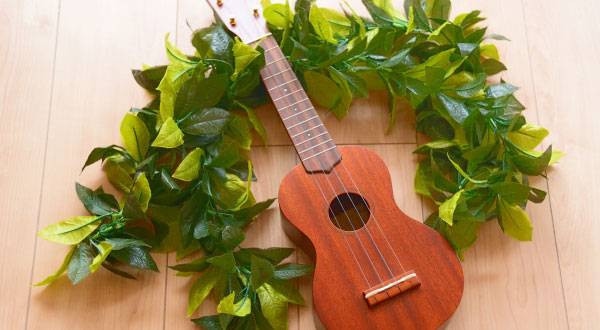
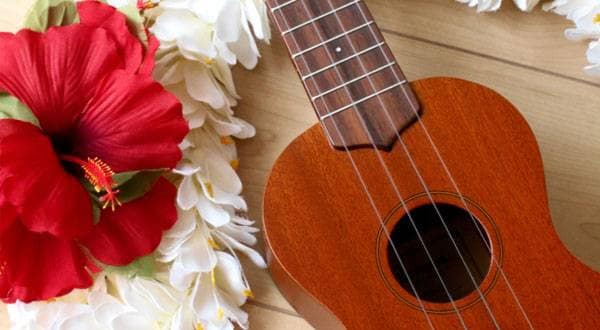
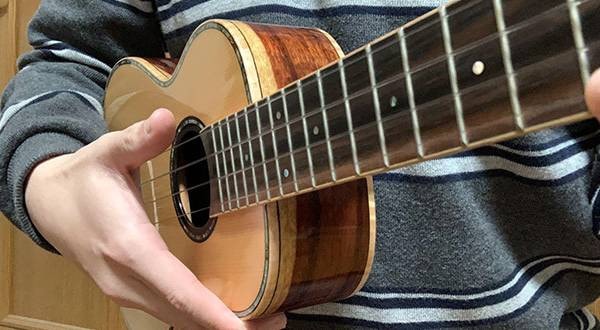
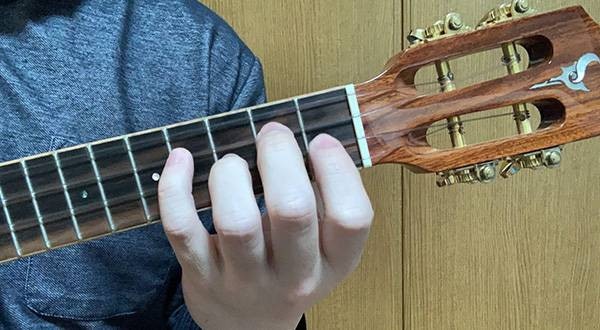
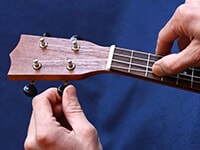 ウクレレのチューニング方法
ウクレレのチューニング方法
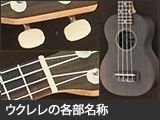 ウクレレの各部名称
ウクレレの各部名称
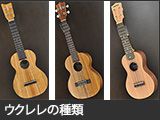 ウクレレの種類
ウクレレの種類
 ウクレレスタートガイド
ウクレレスタートガイド
 めちゃラク!ギター講座
めちゃラク!ギター講座
 ウクレレ初心者講座
ウクレレ初心者講座















